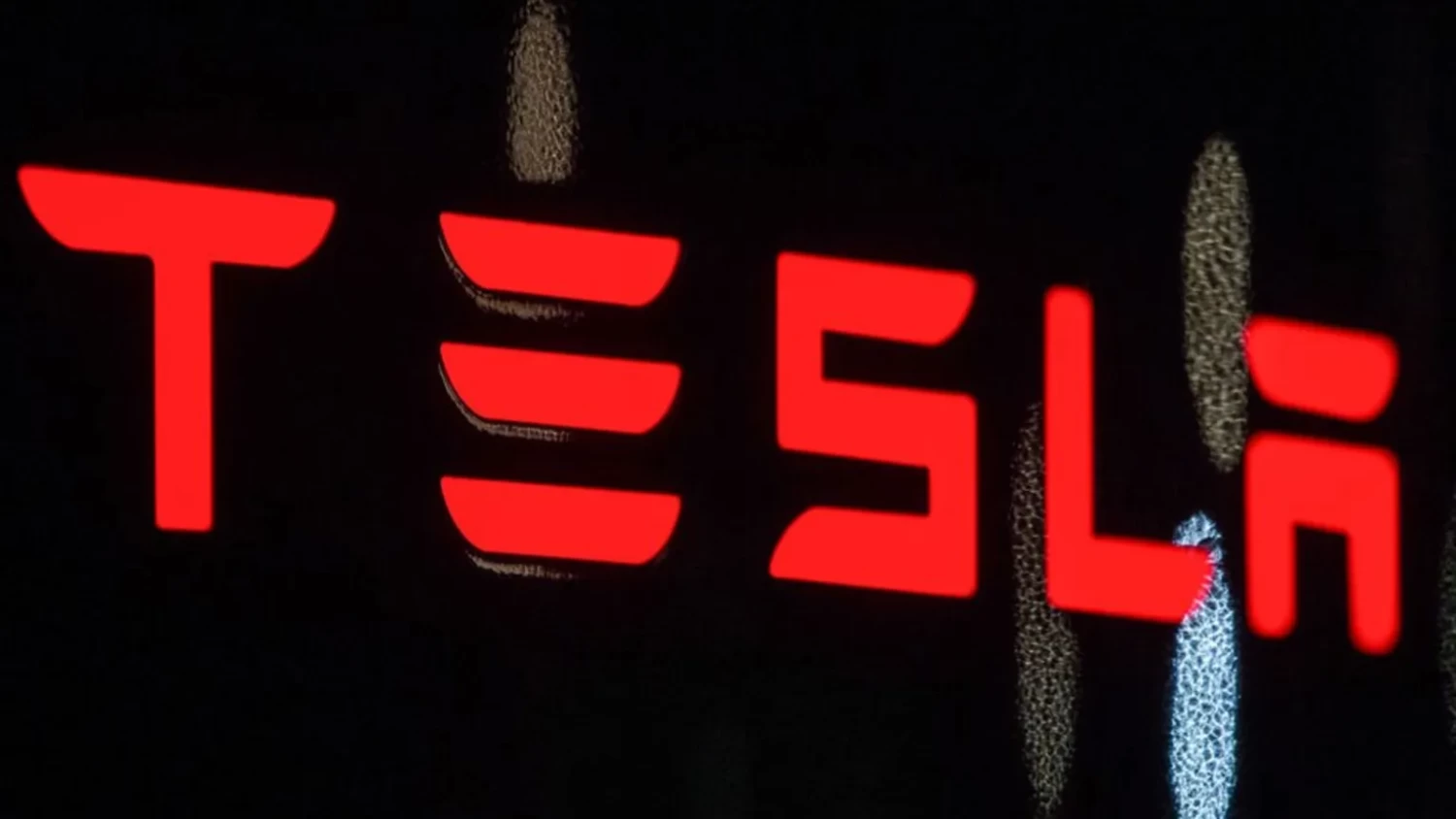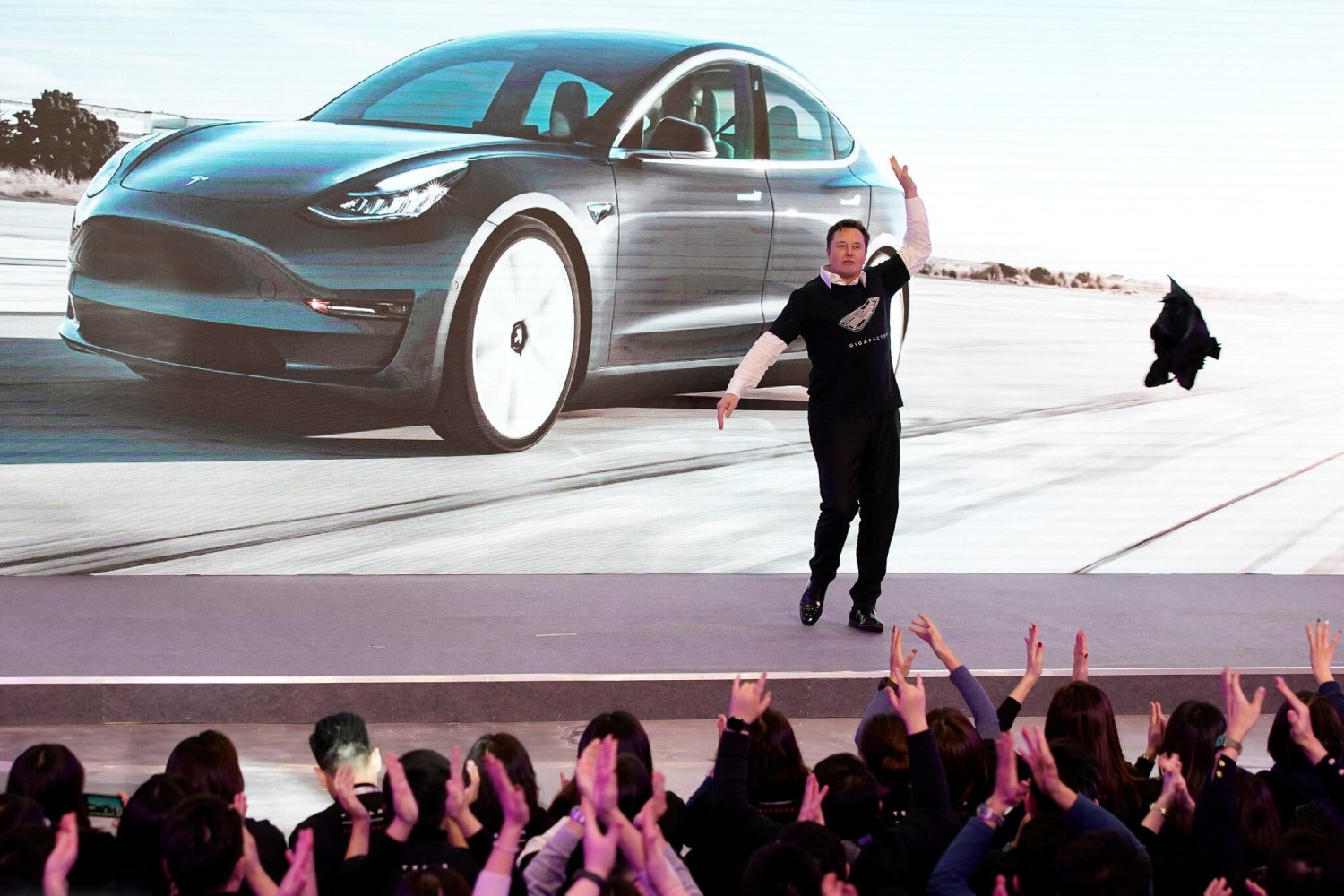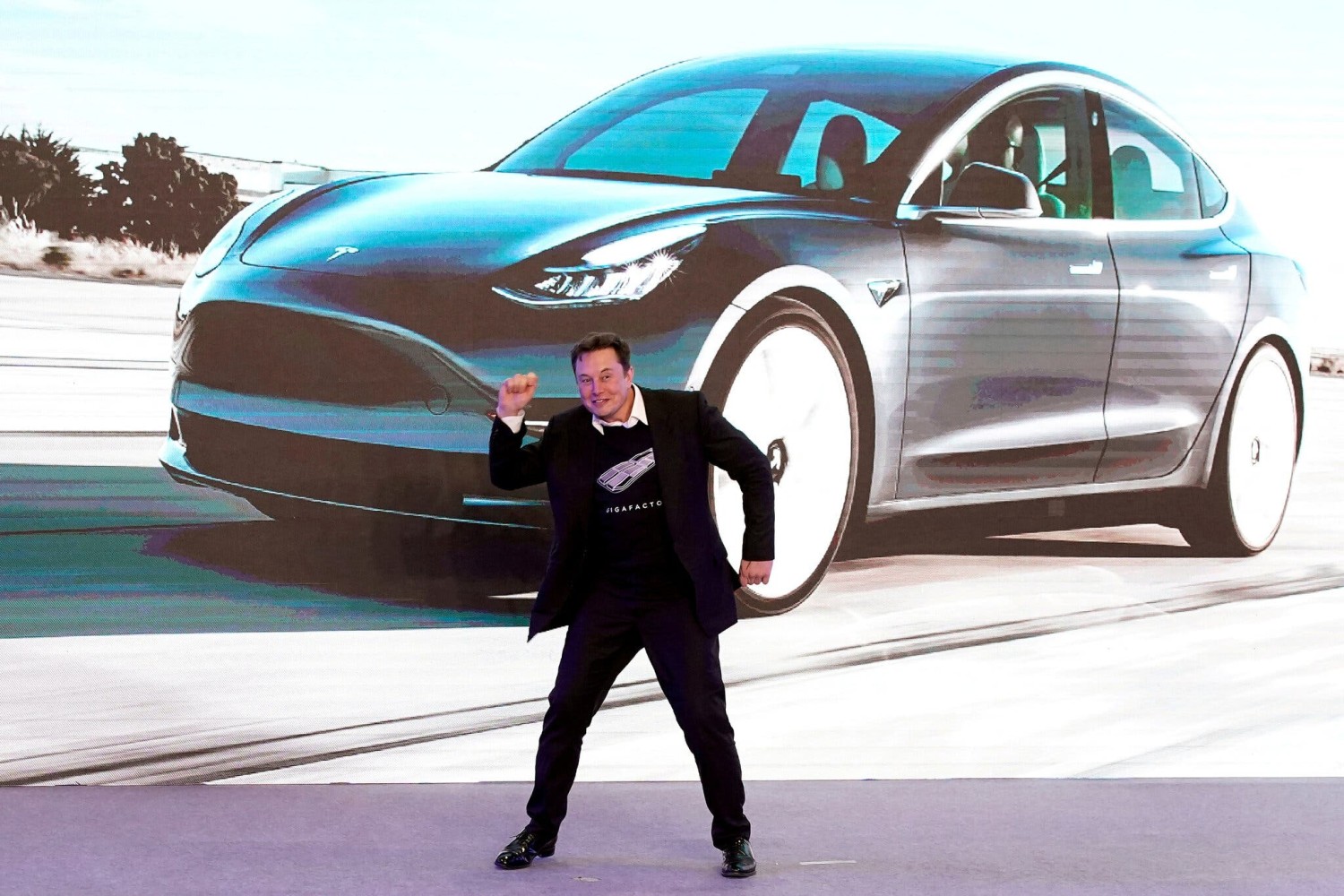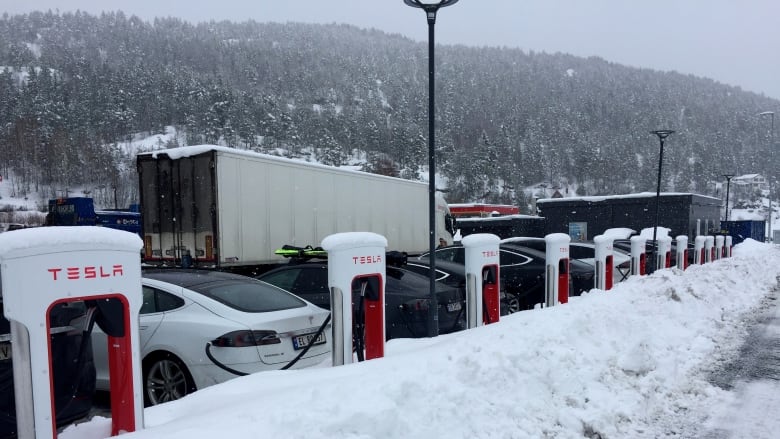Electric Car Owners Confront a Harsh Foe: Cold Weather
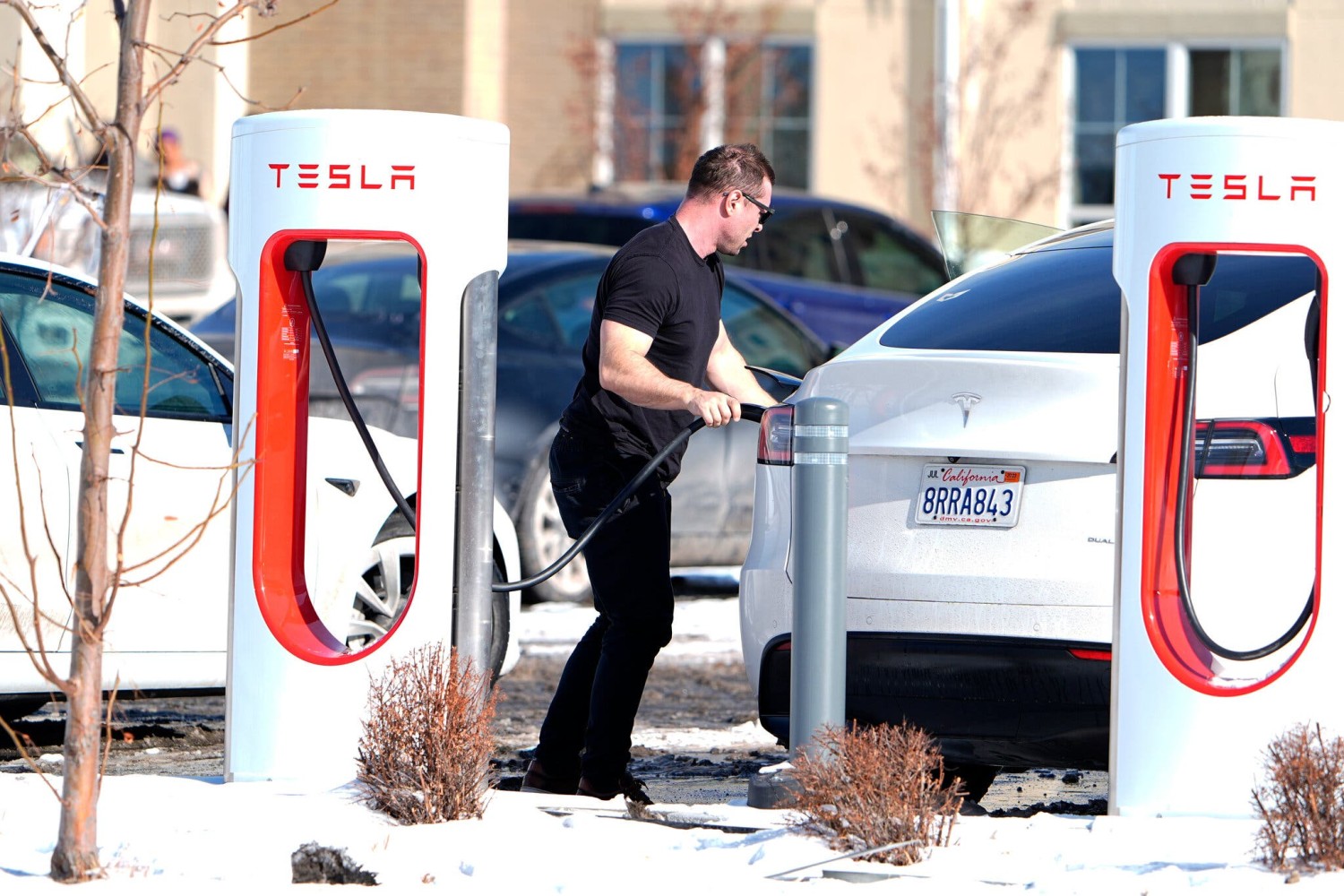
With Chicago temperatures sinking below zero, electric vehicle charging stations have become scenes of desperation: depleted batteries, confrontational drivers and lines stretching out onto the street.
“When it’s cold like this, cars aren’t functioning well, chargers aren’t functioning well, and people don’t function so well either,” said Javed Spencer, an Uber driver who said he had done little else in the last three days besides charge his rented Chevy Bolt and worry about being stranded with a dead battery — again.
Mr. Spencer, 27, said he set out on Sunday for a charging station with 30 miles left on his battery. Within minutes, the battery was dead. He had to have the car towed to the station.
“When I finally plugged it in, it wasn’t getting any charge,” he said. Recharging the battery, which usually takes Mr. Spencer an hour, took five hours.
With more people owning electric vehicles than ever before, cold snaps this winter have created headaches for electric vehicle owners, as freezing temperatures drain batteries and reduce driving range.
And the problems may persist a little longer. Chicago and other parts of the United States and Canada this week have been stunned by bitterly cold temperatures. On Tuesday, wind chills plummeted near -30 degrees across much of the Chicago area, according to the National Weather Service. Dangerously low temperatures and waves of snow are expected to stick through the end of the week.
‘It’s kind of like, I don’t really want a Tesla.’
Vehicles use more energy to heat their batteries and cabin in cold weather, so it is normal to see energy consumption increase, Tesla reminds users in a post on its website, where it offers a few tips for drivers: Keep the charge level above 20 percent to reduce the impact of freezing temperatures. Tesla also recommends that drivers use its “scheduled departure” feature to register the start of a trip in advance, so the vehicle can determine the best time to start charging and preconditioning. That allows the car to operate at peak efficiency from the moment it starts.
In a painfully chilly parking lot in Chicago on Tuesday, Tesla drivers huddled in their cars waiting for a charge.
That morning, Nick Sethi, a 35-year-old engineer in Chicago, said he had found his Tesla frozen shut. He spent an hour in minus 5-degree temperatures struggling with the locks.
Finally, he was able to chisel out the embedded trunk handle to open it, clambering in and driving his Model Y Long Range S.U.V. five miles to the closest supercharging station. He joined a long line of Tesla drivers.
All 12 charging posts were occupied, with drivers slowing the process down slightly by staying inside their vehicles with the heat on high.
“It’s been a roller-coaster ride,” Mr. Sethi, who moved to Chicago from Dallas last spring, said of owning a Tesla through a string of brutally cold days. “I’ll go through the winter and then decide whether I keep it.”
A few charging posts down, Joshalin Rivera was also experiencing a bit of buyer’s remorse. She sat with the heat blasting inside her 2023 Tesla Model 3 as she juiced up the battery.
“If you’re waiting in that line and you only have 50 miles, you’re not going to make it,” Ms. Rivera said, gesturing to the line of vehicles stretched out onto Elston Avenue. She said that she had watched as a Tesla whose desperate driver attempted to cut the line died in the same location on Monday.
In normal conditions, Ms. Rivera’s car can drive up to 273 miles on a single, 30-minute charge. This week, Ms. Rivera said she has awaken to find about a third of her car battery drained from the overnight cold. As temperatures plummeted, she spent hours every morning waiting in line and recharging the battery.
“It’s kind of like, I don’t really want a Tesla,” she said.
Why does cold weather drain electric vehicle batteries?
Unlike cars with internal combustion engines, an electric vehicle has two batteries: a low-voltage and a high-voltage. In particularly cold weather, the lower-voltage, 12-volt battery can also lose charge, like it does in traditional vehicles.
When that happens, the E.V. cannot charge at a fast charger until the low voltage battery has been jump-started, said Albert Gore III, a former Tesla employee who is now the executive director of the Zero Emission Transportation Association, which represents automakers including Tesla and has released a tips sheet for operating electric vehicles in cold weather.
The challenge for electric vehicles is the two sides of the battery — the anode and the cathode — have chemical reactions that are slowed during extremely cold temperatures. That affects both the charging and the discharging of the battery, said Jack Brouwer, director of the Clean Energy Institute and a professor of mechanical and aerospace engineering at the University of California, Irvine.
“It ends up being very difficult to make battery electric vehicles work in very cold conditions,” Mr. Brouwer said. “You cannot charge a battery as fast or discharge a battery as fast if it’s cold. There’s no physical way of getting around.”
They don’t have these problems in Norway.
As people in the industry study what went wrong in Chicago, some suggest that the charging infrastructure may have been simply outmatched by the extreme cold weather.
“We’re just a few years into E.V. deployment at scale.,” Mr. Gore said. “This is not a categorical problem for electric vehicles,” he added, “because it has largely been sorted out in other places.”

Some of the countries with the highest usage of electric vehicles are also among the coldest. In Norway, where nearly one in four vehicles are electric, drivers are accustomed to taking steps, such as preheating the car ahead of a drive, to increase efficiency even in cold weather, said Lars Godbolt, an adviser of the Norwegian Electric Vehicle Association, which represents more than 120,000 electric car owners in Norway.
Charging stations in Norway see longer lines in the winter than summer, since vehicles are slower to charge in colder weather, but that has become less of an issue in recent years since Norway has built more charging ports, Mr. Godbolt said, citing a recent survey of members. Also, the majority of people in Norway live in houses, not apartments, and nearly 90 percent of electric vehicle owners have their own charging stations at home, he said.
Around the world, 14 percent of all new cars sold in 2022 were electric, up from 9 percent in 2021 and less than 5 percent in 2020, according to the International Energy Agency, which provides data on energy security. In Europe, Norway, Sweden, Iceland, Finland and Denmark had the highest share of electric vehicles in new car registrations in 2022, according to the European Environment Agency.
Cold weather is likely to be less of an issue as companies update electric vehicles models. Even in the last few years, companies have developed capabilities that allow newer models to be more efficient in the cold. “These new challenges rise up, and the industry innovates their way to not completely but at least partly solve many of these issues,” Mr. Godbolt said.
All vehicles, including ones powered by diesel or gas, perform worse in cold weather, noted James Boley, a spokesman for the Society of Motor Manufacturers and Traders, a trade association that represents more than 800 automotive companies in Britain. He said that the problem was less about the capacity of electric vehicles to run well in cold weather, and more about the inability to provide necessary infrastructure, like charging stations.
With a gas or diesel powered car, drivers have complete confidence that they will find gas stations, so are less focused on their decreased efficiency in cold weather, he said. “If electric vehicle charging infrastructure isn’t in place, it can be more of a concern.”
Mr. Spencer, the Uber driver, said the economics of driving an E.V. for a ride-sharing service may not work in Chicago winters.
“The payout is the same, but the cost to drivers, with all these extra charges, is much more,” he said.
Ivan Penn and Derrick Bryson Taylor contributed reporting.
Keywords
Newer articles
<p>A bill that will ban TikTok in the United States unless its Chinese owner divests from the company has passed overwhelmingly.</p>
Congress gets closer to forcing TikTok to be sold or face US ban: What's ne
Israel Iran attack: Damage seen at air base in Isfahan
Ukraine ‘will have a chance at victory’ with new US aid, Zelenskyy says
Ukraine war: Kyiv uses longer-range US missiles for first time
House passes potential TikTok ban that could speed through Senate
Who will be Trump’s VP? A shortlist
Congress passes bill that could ban TikTok after years of false starts
How soon could US ban TikTok after Congress approved bill?
Finally, America’s Congress does right by Ukraine
